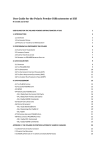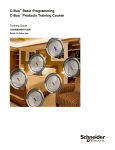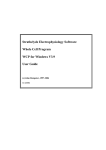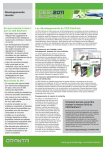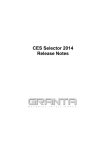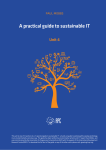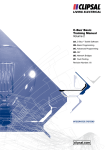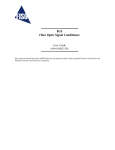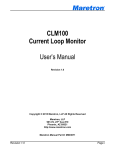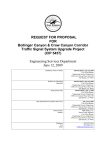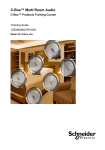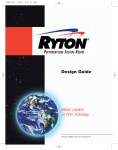Download CES User Manual & Getting Started Guide - Support Home
Transcript
User Manual & Getting Started Guide Copyright © 2013 Granta Design Limited CES Selector is a trademark of Granta Design Limited www.grantadesign.com CES Selector User Manual 1 Contents Legal Matters . . . . . . . . . . . . . . . . . . . . . . . . . . . . . . . . . . . . . . . . . . . . . . 2 Chapter 1 Introduction . . . . . . . . . . . . . . . . . . . . . . . . . . . . . . . . . . . . . . 3 1.1 Read This First 1.2 About This Manual 1.3 Tutorials and Reference Information 3 4 5 Chaper 2 Installation . . . . . . . . . . . . . . . . . . . . . . . . . . . . . . . . . . . . . . . . 6 2.1 Introduction 2.2 Running the Setup Program 6 7 Chaper 3 Databases . . . . . . . . . . . . . . . . . . . . . . . . . . . . . . . . . . . . . . . . . 8 3.1 Databases for Rational Materials Selection 8 Chaper 4 Getting Started with CES Selector. . . . . . . . . . . . . . . . . . . . . 10 4.1 Brief Description of CES Selector 4.2 Browsing and Searching 4.3 Comparing Records 4.4 Filtering and Screening 4.5 Tree Selection 4.6 Find Similar 4.7 Putting it All Together 4.8 Process Selection 4.9 Saving, Copying, and Report Writing 10 11 17 21 24 25 26 31 32 Chaper 5 Getting the Most Out of CES Selector . . . . . . . . . . . . . . . . . . 34 5.1 Custom Selection 5.2 Performance Indices 5.3 Functional Data 5.4 Find Similar with Additional Criteria 5.5 Eco Audit 5.6 Hybrid Synthesizer 34 42 44 46 49 55 Toolbars and General Information. . . . . . . . . . . . . . . . . . . . . . . . . . . . . 58 CES Selector User Manual 2 Legal Matters License Agreement The software described in this document is furnished under a License Agreement and may be used or copied only in accordance with the terms of the License. Copyright This documentation for CES Selector and the software described in it are copyrighted ©19992013 Granta Design Limited, with all rights reserved. Under the copyright laws, neither the documentation nor the software may be copied, photocopied, reproduced, translated, or reduced to any electronic medium or machine readable form, in whole or in part, without the prior written consent of Granta Design Limited, except as described in the installation instructions. Trademarks Cambridge Engineering Selector, CES EduPack™, CES Selector™, CES Constructor™, and other CES related product names are Trademarks of Granta Design Limited. Permission to Reprint, Acknowledgments, References Reprinting Selection charts, record data and extracts from hardcopy or online documentation copyrighted by Granta Design Limited may be reprinted in published works provided: (i) prior written permission is obtained for every instance from Granta Design Limited by mail, fax, or electronic mail (contact details on back cover of this manual); (ii) each such chart, datasheet, document, etc, is accompanied by an acknowledgment of the form: Chart/data/etc. from CES Selector 2014, Granta Design Limited, Cambridge, UK, 2013 (www.grantadesign.com). Bibliographic References When referring to the CES Selector software in publications, the bibliographic reference is: CES Selector software, Granta Design Limited, Cambridge, UK, 2013 (www.grantadesign.com). When referring to this User's Manual in publications, the bibliographic reference is: CES Selector User's Manual (6th Edition), Granta Design Limited, Cambridge, UK, 2013 (www.grantadesign.com). CES Selector User Manual 3 Chapter 1 Introduction 1.1 Read This First CES Selector is a powerful tool that aids critical design and business decisions for engineering enterprises and materials producers. Based on rational material selection methodologies, CES Selector enables rigorous and quantitative analysis of: • Optimal material and process selection for component design - maximizing performance while minimizing factors such as volume, mass, cost, carbon footprint … • Positioning of materials - how do your materials compare against your competitors? • Material development - identify new property combinations that will give you a competitive advantage in the market. The unique selection methodology, software tools, and databases of CES Selector enable candidate materials and processes to be rapidly identified using a systematic, auditable approach to product design. The main aim of this manual is to give a brief insight into the capabilities of the selection tools as well as practical experience through the exercises. However, in order to benefit from the full power of CES Selector, you should also refer to the book 'Material Selection in Mechanical Design', by Prof. Mike Ashby, which provides an in-depth review of the rational selection methodology. CES Selector consists of the following components: • Selector software, including Browse, Search, Selection, and Comparison tools. • Optional add-on tools: Eco Audit Tool, Hybrid Synthesizer, and CES Constructor. • MaterialUniverse and ProcessUniverse data modules, containing complete and comparable data covering all standard material grades and manufacturing processes. Includes links to external data sources and ‘Design Notes’ that enable users to drill down to the origins of properties. • A range of specialist databases that provide information on a wide range of individual grades and material conditions (e.g. temper, form, statistical basis, filler levels). • ‘Material Selection in Mechanical Design’ textbook that provides and in-depth explanation of the rational material selection methodology used within CES Selector. For the latest information, please see www.grantadesign.com/ces. CES Selector User Manual 1.2 About This Manual This manual contains 5 chapters: Chapter 1 Introduction provides information about this manual and where to find help. Chapter 2 Installation describes the system requirements and the installation options. Chapter 3 Databases describes databases for rational material selection. Chapter 4 Getting Started with CES Selector provides a brief overview of the main features and capabilities of CES Selector in tutorial format. Chapter 5 Getting the Most out of CES Selector provides and introduction to some additional tools and features of CES Selector. 4 CES Selector User Manual 5 1.3 Tutorials and Reference Information Information on getting started with the CES Selector software can be found in Chapter 4 and Chapter 5 of this manual. A comprehensive set of tutorials covering use of the software as well as reference information about all aspects of the software can be found in the in-software Help system. The CES Help contains a wealth of information about the system, including details of the selection methodology, tables of material indices, solutions to standard engineering problems, and material and process selection case studies with loadable project files. CES Selector User Manual 6 Chaper 2 Installation 2.1 Introduction This part of the User Manual provides instructions for registering and installing your copy of the CES Selector system. System Requirements To run the CES Selector software you will need: • A compatible Microsoft® Windows® operating system; Windows XP 32-bit SP3, Windows Vista 32-bit or 64-bit SP2, Windows 7 32-bit or 64-bit, Windows 8 32-bit or 64-bit. • 1 GB of RAM. • 2 GB of available hard disk space. • Internet connection (for the Web Search functionality). • Microsoft .NET Framework Client version 4.0 and Visual Studio Runtime; if these are not already installed on your PC, you will be given the option to add them automatically to the CES Selector installation process. • Administrator rights. License Options CES Selector is licensed per user. The number of users specified on the license agreement represents the number of different employees who can use the software. For each user, the software can be installed on more than one machine, for example on both work and home computers. However, it should not be installed on a machine that provides access to users not covered by the license agreement. Note: The license is not a floating or concurrent license. As a result, it can only be used by the number of people specified on the license agreement. Configuration The CES Selector software needs to be installed on individual PCs. All of the databases supplied with CES Selector are installed by the installation procedure described in Chapter 2.2. Additional CES Selector databases can be purchased and installed in the same way. If you would like further assistance, please contact Granta ([email protected]). CES Selector User Manual 7 2.2 Running the Setup Program If you have installed a previous version or evaluation copy of CES Selector, we recommend that you uninstall it before installing this version. To do so, use Add or Remove Programs in Windows Control Panel. To install the software, run setup.exe and follow the instructions in the installation wizard. You can use Cancel or Exit Setup to quit the installation when they are displayed. You will require your license key to install the software. Note that the CES Constructor software is not automatically distributed with every CES Selector system. It will only be available if you have purchased an appropriate license. CES Selector User Manual 8 Chaper 3 Databases 3.1 Databases for Rational Materials Selection The MaterialUniverse and ProcessUniverse data modules are used with CES Selector to create high quality databases that you won't find elsewhere. They are designed for like-to-like comparisons across the whole spectrum of material and processing possibilities. Typical material databases do not allow this - the most common reasons being: 'holes in the data'; and different properties reported for different materials. This makes it difficult to compare different classes of materials. Universe data modules solve the problem by conforming to strict database design principles. These principles are reviewed below, with reference to the MaterialUniverse data module. Complete spectrum represented The MaterialUniverse data module contains a representation of virtually every commercial engineering material in every class. This means that you can be sure that you have considered all material possibilities for any particular application. Each material represented only once Multiple instances of the same material from different producers are consolidated into one representative record. This reduces the complexity of the engineer's search for the best material. Property ranges Properties of real materials are seldom exact - there are inevitable variations from batch to batch and manufacturer to manufacturer. These variations are captured in a Universe data module by a range - the range may be small for a property such as density, but relatively large for price or toughness. Complete property set In a Universe data module, there is a value for every property on the datasheet. If the value is not known experimentally, it has been estimated by using intelligent estimating techniques based on well-established correlations between material properties, using their fundamental physics. Quality checks Granta has examined hundreds of material datasets over the years from various sources and, without exception, they contain errors - sometimes by as much as 1000%! To minimize errors in the Universe data modules, strict data checking procedures are used. These include checks that properties for specific material classes fall within acceptable ranges, and powerful science-based checks on the correlations between properties. Normalization All properties are presented in the same unit system, which can be chosen by the user. Properties that are reported in different ways for different materials classes are equivalenced to enable comparison. Hierarchy The carefully-constructed record hierarchy allows simple and rapid navigation to all records in the data module. CES Selector User Manual 9 The Result Applying these principles required a great amount of work in data collection and processing. The MaterialUniverse data module represents over 50 man-years of effort spread over a 15year period. The rewards of this effort are immediate and numerous with the MaterialUniverse and ProcessUniverse databases used in combination with the CES Selector software. CES Selector User Manual 10 Chaper 4 Getting Started with CES Selector The following exercises give an overview of CES Selector and will teach you how to use the core functionality. The exercises in Chapter 5 go into further detail and explore some of the software’s more specialized features. There is also comprehensive help file within the software that gives more detailed guidance, as well as case studies with loadable project files. 4.1 Brief Description of CES Selector There are three main tools in CES Selector: • BROWSE Explore the database and retrieve records via a hierarchical index or tree. • SEARCH Find information via a full-text search of records. • SELECT The central hub of CES Selector, used to apply the Rational Material Selection methodology. A powerful selection engine that identifies records that meet an array of design criteria and enables trade-offs between competing objectives. The following exercises cover the use and functionality of these tools. CES Selector User Manual 11 4.2 Browsing and Searching Exercise 1 Opening the Database If you have more than one database installed, CES will show the Databases dialog. The following exercises use the MaterialUniverse and ProcessUniverse tables, which are part of every Granta database. CES Selector then opens the Edition Homepage. There is a graphic for each data module (a collection of tables). Hover over a data module to see the tables it contains. Click on a table name to show a description below. Use the More information link below the modules to show detailed descriptions of all of the tables in a data module. • Swap between the available tables and see how the different tables have different applications and data Click on a table in the Edition Homepage to select it. The information below the table graphic displays information on the currently-selected table. You can also change the selected table from the graphic in the More information page. • Change to the PROCESSUNIVERSE table Click on MaterialUniverse and notice that the Browse tree in the left pane updates. • CLOSE the HOMEPAGE Click on the cross at the top of the Homepage tab. This page can be reopened at any time from View menu - Home. • Change to the MATERIALUNIVERSE table With the Homepage closed, navigate to different tables using the Table drop-down in the Browse pane. Browse Search Table: MaterialUniverse Subset: All materials Select CES Selector User Manual 12 Exercise 2 Browse Materials Browse Search Table: MaterialUniverse Subset: All materials Select MaterialUniverse Ceramics and glasses Fibers and particulates Hybrids: composites, foams etc. Metals and alloys Polymers: plastics, elastomers Select the Table MaterialUniverse and the Subset All materials. • Find a record for STAINLESS STEEL • Find a record for CONCRETE • Open the GENERIC record for POLYPROPYLENE Generic records are records at the folder level and give general information on the material, rather than data on a specific variant. Generic records have their own icon to open. . Double-click • Open a POLYPROPYLENE record Double-click on the record name in the tree Click on hyperlinked attribute names for design notes, which provide background information on properties, test notes, and selection guidelines. Right-click on the datasheet to see a context menu with further actions e.g., locate in Browse tree, copy the datasheet, print the datasheet, export the data to an FE package format. CES Selector User Manual 13 The design note for Young’s modulus: Young's modulus Stiffness in tension (also called Tensile Modulus, Elastic Modulus, Modulus of Elasticity). Test notes Young's modulus (E) is the slope of the initial linear-elastic part of the stress-strain curve in tension. Material selection notes Use to select materials with sufficient stiffness (high value) or sufficient compliance (low value). Modulus in tension, flexure, and compression are similar for most materials so can be interchanged for approximate work. Typical values: Flexible plastics and elastomers Unfilled plastics Reinforced plastics Ferrous metals Non-ferrous metals Technical ceramics Ceramics and glasses < 1 GPa 1–4 GPa 5–25 GPa 70–250 GPa 10–310 GPa 20–700 GPa 1–120 GPa Click to see science note. For more information on the property and to drill down to the underlying science, follow the hyperlink to the science note. CES Selector User Manual 14 Part of a datasheet for the material Polypropylene: • Find PROCESSES that can shape POLYPROPYLENE using the ProcessUniverse LINK at the bottom of the datasheet. CES Selector User Manual 15 Exercise 3 Browse Processes Browse Search Table: ProcessUniverse Subset: All processes Select ProcessUniverse Joining Shaping Surface treatment Browse ProcessUniverse: All processes • Find a record for INJECTION MOLDING • Find record for LASER SURFACE HARDENING AND MELTING • Find record for FRICTION WELDING (METALS) • Find materials that can be DIE CAST, using the LINK at the bottom of a record for DIE CASTING CES Selector User Manual 16 Exercise 4 The Search Facility • Find the material POLYLACTIDE Browse Search Select Polylactide The search term is highlighted in records opened from the search results. • Find the materials for CUTTING TOOLS • Find the process RTM Note: The folder name is also included in the search. If the term appears in a folder name, all records under that folder will be returned; for example, a search for ceramic would return all records in the folder named Ceramic. Wildcards are automatically added to the end of each search term. • Enter the search term ALUM Records for or containing Alumina and Aluminum are returned. • The following search operators are available: AND Finds records containing both the search terms, so steel AND alloy returns only records containing both the words steel and alloy OR Finds records containing either search term, so steel OR alloy returns all records that contain steel, alloy, or both NOT Finds records containing the first search term, but not the second, so steel NOT alloy returns only records with the word steel but without the word alloy Phrase Search Finds the exact search term, so “steel alloy” will return only records containing the exact phrase steel alloy Parentheses Used to group search terms, so iron AND (ore OR cast) will return the records containing iron and containing either ore, cast, or both Note: AND operators are automatically added when a search has two or more terms and no other operators have been entered. CES Selector User Manual 17 4.3 Comparing Records The performance of different materials can be compared by creating Comparison Tables or Property Charts. Exercise 5 Comparing Records Browse Search Table: MaterialUniverse Subset: All materials Select MaterialUniverse ... Polymers: plastics, elastomers Thermoplastics PP (Polypropylene) Unfilled Copolymer, high flow … Set as Reference Add to Comparison Table • Add an unfilled PP (Polypropylene) and an unfilled high-density PE (Polyethylene) record to a COMPARISON CHART Find an example of each in the Browse tree, then right-click and select Add to Comparison Table. • Set the PE-HD record as the reference record Hover over the record name in the comparison table and click the Set as Reference icon . CES Selector User Manual 18 • Change the display to show the differences relative to the reference record as percentages Click %Change in the comparison table toolbar. • Clear the Comparison Table Browse Search … Reference Record Comparison Table Select Clear View Tools All Tables MaterialUniverse CES Selector User Manual 19 Exercise 6 Creating a Property Chart Select MaterialUniverse: All bulk materials • Make a BAR CHART of YOUNG’S MODULUS (E) Set the y-axis to Young's modulus and leave the x-axis at <None>. • Make a BUBBLE CHART of YOUNG'S MODULUS (E) against DENSITY (ρ) Set the y-axis to Young’s modulus and set the x-axis to Density. Leave the Axis Settings defaults to create a log-log plot. Browse Search Select 1. Selection Data MaterialUniverse: All bulk materials Reference: PE-HD 2. Selection Stages Graph/Index X-axis Limit Tree Y-axis Single Property Density Yield strength Young 's modulus etc Records on a chart can be clicked to add labels, or double-clicked to open the corresponding datasheet. Labels can be dragged, or deleted using the DEL key. • Show the Reference Record chart Click the Show Reference Record icon in the Graph Stage toolbar; in the chart, all records except the reference record are grayed out. • DELETE THIS STAGE Right-click on stage in Selection Stages and select Delete. CES Selector User Manual 20 CES Selector User Manual 21 4.4 Filtering and Screening Exercise 7 Selection Using a Limit Stage • Find materials with: MAX. SERVICE TEMPERATURE > 200 °C THERMAL CONDUCTIVITY > 25 W/m.°C ELECTRICAL RESISTIVITY > 1e15 μohm.cm Browse Search Select 1. Selection Data Limit stage MaterialUniverse: All bulk materials Mechanical properties 2. Selection Stages Thermal properties Graph/Index Limit 3. Results X out of Y pass Tree Min Max Max. service temp. 200 °C Thermal conductivity 25 W/m.K J/kg.K Specific heat capacity Rank by: Property A Material 1 2130 Material 2 2100 Material 3 1950 Material 4 1876 etc. Electrical properties Min Electrical resistivity 1e15 Max ohm. cm Ceramics and glasses Limit guidance bars Composites Metals and alloys Polymers and elastomers 1 1E+8 1E+20 Use the limit bars for guidance on suitable values. Enter the limits – minimum or maximum as appropriate – and click Apply. If a reference record is set, its values for each property will be shown to the right of the min/max entry boxes. Example results: Aluminum nitride, Alumina, Silicon nitride. Some properties have discrete values, rather than numeric ranges. • Edit this limit stage and search for materials with non-opaque TRANSPARENCY. Under Optical Properties, refine by transparency using the drop-down and tick Translucent, Transparent, and Optical quality. Click Apply. Example results: Alumina (translucent) and Diamond. • DELETE THIS STAGE CES Selector User Manual 22 Exercise 8 Selection Using a Graph Stage When plotted on a Graph Stage, records can also be filtered using the charting Box and Line Selection tools. This provides a more qualitative approach to filtering. • Make a BAR CHART of YIELD STRENGTH (σy) Set the y-axis to Yield strength (elastic limit). Browse Search Select 1. Selection Data Bar chart MaterialUniverse: All bulk materials Graph/Index Limit Tree Yield strength 2. Selection Stages Bubble chart Rank by: Property A Material 1 2130 Material 2 2100 Material 3 1950 Material 4 1876 Yield strength 3. Results X out of Y pass Box selection Line selection Density etc. • Use a BOX SELECTION to find materials with high values of YIELD STRENGTH Click Box Selection , then click-drag-release to define the box. • Add DENSITY (ρ) to the other axis Either: highlight Stage 1 in Selection Stages, right-click and choose Edit Stage from the menu; or double-click the axis to edit. • Use a BOX SELECTION to find materials with high STRENGTH and low DENSITY • Use a LINE SELECTION to find materials with high values of the specific strength σy / ρ Click Gradient-Line Selection , then enter slope in the dialog, in this case 1. Click on the graph to position the line through a particular point. Click above or below the line to select an area, in this case above the line for high values of σy / ρ. Drag the line upwards to refine the selection to fewer materials. CES Selector User Manual 23 Selection box Selection line, slope 1 Selection line, slope 1 • Rank the results by specific strength (YIELD STRENGTH / DENSITY) Rank by Stage 1: Performance Index and click on results column to reverse the order. Example results: CFRP, Titanium alloys, Magnesium alloys. • DELETE ALL STAGES CES Selector User Manual 24 4.5 Tree Selection Using a Tree Stage, records can be filtered based on their links to records in other data tables, or based on the database hierarchy (tree). Exercise 9 Selection Using a Tree Stage • Find materials that can be MOLDED In the Tree Stage window, select ProcessUniverse, navigate to Molding, and click Insert followed by OK. Browse Search Select 1. Selection Data MaterialUniverse: All bulk materials Tree stage for material Ceramics Steels 2. Selection Stages Graph/Index Limit Tree Material Hybrids Al alloys Metals Cu alloys Polymers Ni alloys... 3. Results X out of Y pass Tree stage for process Cast Material 1 Material 2 Material 3 Material 4 etc. Join Process Shape Surface Deform Mold Composite Powder Prototype • DELETE THIS STAGE • Find processes to join STEELS Select Processes: Joining processes. In the Tree Stage window, select MaterialUniverse, expand Metals and alloys in the tree, select Ferrous, and click Insert followed by OK. • DELETE THIS STAGE CES Selector User Manual 25 4.6 Find Similar Materials in the database can be ranked based on their similarity, or nearness, to a specified material. This is useful for finding replacement or equivalent materials. The way in which nearness is calculated can be tailored to account for specific design requirements behind the initial material choice. Exercise 10 Find Similar and Nearness Settings • Open the datasheet for PVC (flexible, Shore A85) • Find similar materials Click Find Similar and confirm changing the reference record if prompted. Available materials are ranked by their similarity to the reference material. In this instance, calculations are based on the default nearness criteria for this table. • Compare the nearest material Select the first result - EVA (Shore A85, 25% vinyl acetate) - and click Comparison. A comparison report is generated, showing the selected result and the reference record. Significant differences in the attribute values are highlighted. Datasheet Find Similar PVC (flexible, Shore A85) Records similar to: PVC (flexible, Shore A85) Name Nearness (%) PVC (flexible, Shore A85) 100 EVA (Shore A85, 25% vinyl acetate) 85 PVC (flexible, Shore A65) 85 POE/POP (Ethylene-based, Shore A90... 84 etc. Comparison... Comparison - MaterialUniverse x Averages #. Values Highlight % Change > 10 PVC EVA Price (USD/lb) 2.34 2.1 Density (kg/m^3) 1330 950 CES Selector User Manual 26 4.7 Putting it All Together Exercise 11 Combining Filtering and Charting Tools Select MaterialUniverse: All bulk materials and set the Reference Record to POM (thermoplastic). • Find materials with: DENSITY < 2000 kg/m^3 STRENGTH (Elastic limit) > 60 MPa THERMAL CONDUCTIVITY < 10 W/m.°C Add a Limit Stage with three criteria. • Filter the results to find those that can be THERMOFORMED Add a Tree Stage and select ProcessUniverse - Shaping - Molding. • Rank the results by PRICE Add a Graph Stage with a bar chart of Price. On the Graph Stage, all materials that fail one or more stages are grayed out. The Results pane shows the materials that pass all stages. Example results, lowest PRICE first: PET-GF, PLA, PET ... • Add the three materials with the lowest price to the Comparison Table Tick the checkboxes for the top three records in Results. • VIEW the Comparison Table Click Comparison below Results. • GENERATE the Selection Report Click Selection below Results. A selection report is created, containing a summary of the selection project on the first page, details of each selection stage on the following pages, and the comparison table on the final page. CES Selector User Manual 27 Browse Search Select 1. Selection Data MaterialUniverse: All bulk materials Stacked stages Set... Reference: Cast Deform Join Process 2. Selection Stages Mold Shape Composite Surface Graph/Index Limit Powder Tree Prototype Min Density Yield strength T-conductivity Intersection of all stages X out of Y pass Material 1 Rank by: Property A 2130 Material 2 2100 Material 3 1950 Material 4 1876 etc. 4. Reports Comparison... Selection... Price 3. Results Max 2000 60 10 CES Selector User Manual Exercise 12 Finding Supporting Information The following exercise requires an Internet connection. CES Selector translates the material ID to search strings compatible with a group of highquality material and process information sources and delivers the hits. Many of the sources require a subscriber-based password. The ASM source is particularly recommended. • Search the web to find more information on PET With the PET datasheet open, click on Search Web. 28 CES Selector User Manual 29 Exercise 13 Search and Find Similar • Search for the material PC and open the datasheet Use Search to find and display PC (high viscosity, molding and extrusion). • Find records similar to the open record Click Find Similar . Use the default weightings to calculate nearness; do not open the Nearness Settings dialogue. Browse Search Select PC Datasheet PC (high viscosity, molding and extrusion) Find Similar Records similar to: PC (high viscosity, ...) Name Nearness PC (high viscosity, molding and extrusion) 1 etc. Selection Project... • Apply additional design constraints Click Selection Project. This creates a selection project and ranks the results by nearness to the reference record. • Exclude materials that have poorer flammability than the reference: Slow-burning FLAMMABILITY Self-extinguishing Non-flammable Add a Limit Stage and select the correct flammability options from the drop-down. • Compare the selection results Select the check boxes for PPO/PS and PBT. Under Reports, click Comparison. • Use the comparison table to check for other significant differences in performance, for example, ELONGATION. CES Selector User Manual 30 1. Selection Data MaterialUniverse: All materials Reference: PC (high viscosity, ...) Limit stage 2. Selection Stages Graph/Index Durability: flammability Limit Highly flammable Tree Flammability 3. Results X out of Y pass Nearness (%) PC (high viscosity, molding and ...) 100 PC (low viscosity, molding and ...) 99 PC (low viscosity, molding and ...) 97 PC (copolymerr, high-heat) 92 etc. 4. Reports Comparison... Selection... Reference: SlowSelf-extinguishing burning Non-flammable Slow-burning CES Selector User Manual 31 4.8 Process Selection Exercise 14 Selecting Processes Select ProcessUniverse: Shaping processes. • Find PRIMARY SHAPING PROCESSES to make a component that has: SHAPE Dished sheet MASS 10 - 12 kg SECTION THICKNESS 4 mm ECONOMIC BATCH SIZE > 1000 Add a Limit Stage with five criteria. • Refine this search to only include THERMOPLASTIC materials Add a Tree Stage and select MaterialUniverse - Polymers - Plastics - Thermoplastics. Example results: Thermoplastic composite molding, Spray-up, Rotational molding, Compression molding. Browse Search Select 1. Selection Data ProcessUniverse: Shaping processes 2. Selection Stages Graph/Index Limit Tree Shape Dished sheet Ceramics Hybrids Material Physical attributes Mass range 10 12 kg Range of section thickness 4 4 mm Process characteristics Primary shaping processes Economic attributes Economic batch size (units) 1000 Metals Polymers Elastomers Plastics Thermoplastics Thermosets CES Selector User Manual 32 4.9 Saving, Copying, and Report Writing Exercise 15 Adding Comments and Saving a Project You can add comments to a selection project as a reminder of why you have applied certain constraints and objectives. Comments are displayed on mouse-over in the selection report, and are saved in the project file. Comments can be added to each selection stage in a project. Click the Notes icon in the stage window heading, then type in the dialog. Comments can also be added to the selection report summary. For example, adding information on which material was finally selected, and the reasons why, provides full traceability of the material selection. Stage Properties Limit Title Limit Notes 4. Reports Selection... Project Summary Project Settings Summary Title Select all materials Notes • Save the project Go to the File menu - Save Project. Give the project a filename and directory location; the project will be saved with the file extension .ces. CES Selector User Manual 33 Exercise 16 Exporting and Copying Reports can be exported to a PDF or Word document. • Generate a SELECTION REPORT • Export the report as a PDF Click Export and select PDF. Note: You will require a PDF reader such as Adobe Reader to view the exported selection report. 4. Reports Selection... Project Summary Print Export PDF Word Charts, records and results lists, however, can be copied and pasted into a word processing application. • Generate a chart. Copy and paste the chart into a document Click on the chart. Either: right-click on the chart and select Copy; or press CTRL+C to copy the chart to your clipboard. Paste from your clipboard to the document. • SEARCH for a record and display the datasheet. Copy and paste the datasheet into a document • GENERATE a RESULTS list using SELECT. Copy and paste the full list into a document Right-click in Results and click Select all. Either: right-click on the highlighted list and select Copy; or press CTRL+C once the list has been highlighted. • Copy individual results from the results list into a document Use SHIFT+click or CTRL+click to highlight selected records. • Try editing the document you have created CES Selector User Manual 34 Chaper 5 Getting the Most Out of CES Selector The following exercises introduce some additional tools and features designed for increased productivity. 5.1 Custom Selection Exercise 17 Favorites The favorites feature enables users to highlight their favorite records e.g. a company's preferred materials. • Browse to the CAST ALUMINUM folder • Add the folder as a favorite Right-click on the folder name and select Add to Favorites; on the tree and datasheet, the material will now be marked with a star to indicate it is a favorite. Browse Search Table: MaterialUniverse Subset : All bulk materials MaterialUniverse Metals and alloys Non-ferrous Aluminum Cast Wrought Select Tools Add to Favorites • Add the TYPE 66 PA folder as a favorite as well Expand Polymers - Plastics - Thermoplastics - PA (Polyamide/Nylon) Select MaterialUniverse: All bulk materials • Make a BUBBLE CHART of YOUNG’S MODULUS (E) against DENSITY (ρ) As in Exercise 6. • Show Favorites Click Favorites ; all the materials that are not favorites are grayed out. Click on a favorite, colored material to add a label. CES Selector User Manual • Clear Favorites (Go to the Tools menu - Favorites - Clear) • RETAIN THIS STAGE FOR THE NEXT EXERCISE 35 CES Selector User Manual 36 Exercise 18 Adding User Defined Records New materials are continuously being developed and introduced onto the market. These materials can be added and compared with other materials in the database using the User Defined Record feature. • Add a second SELECTION STAGE with the following constraint: THERMAL EXPANSION COEFFICIENT < 100 μstrain/°C Add a Limit Stage with one criterion. • Add your own record Right click in the bubble chart and select Add Record. • For the User Defined record, set the following values: NAME New material DENSITY Min. 1100 kg/m^3 YOUNG’S MODULUS 70 - 75 GPa Click OK when finished. The new record will be shown on the Graph Stage with the default color as orange. Young's modulus User Defined Record Record Details Bubble chart Name: New material Add Record Selection attributes Density Density Orange Color: Young's modulus Thermal expansion coefficient 1100 70 kg/m^3 75 GPa strain/ °C • Show the User Defined record Click Show User Defined Records grayed-out. ; all the materials that are not user defined are CES Selector User Manual 37 When a record is added from a chart, only the selection attributes are shown for data entry. User-defined records do not fail stages when no value has been entered for a specified constraint (such as thermal expansion in this example). A user-defined record appears on the Browse tree under My records. User defined records are saved in the selection project file, not the database. You may edit or delete a user-defined record. MaterialUniverse Ceramics and glasses ... Polymers: plastics, elastomers My records New material ... Edit Record Delete Record • DELETE the LIMIT STAGE, but leave the initial GRAPH STAGE, as this will be needed for the next exercise • SAVE the project CES Selector User Manual 38 Exercise 19 Selection with a Custom Subset The CES Selector databases are supplied with a range of standard subsets (e.g. All bulk materials, Metals, Magnetic materials, etc.) which enable users to restrict their material selection to certain material groups within the database. The custom subset feature enables users to define their own subsets. • Change the Selection table to CUSTOM materials and select ALUMINUM and PLASTICS and see that the bubble chart updates. In the Custom Subset dialog, use the checkboxes to include or exclude records and folders. Browse Search Select 1. Selection Data Custom: Define your own subset... Custom Subset Selection table: MaterialUniverse Initial subset: All bulk materials Selection attributes: All bulk materials MaterialUniverse Ceramics and glasses Fibers and particulates Hybrids: composites, foams, etc. Metals and alloys Ferrous Non-ferrous Aluminum Beryllium ... ... Polymers: plastics, elastomers Elastomers Plastics Note: The Selection attributes setting defines what properties will be available in graph and limit selection stages. CES Selector User Manual 39 CES Selector User Manual 40 Exercise 20 Record Coloring The CES Selector databases use a standardized color scheme for displaying records (e.g. dark blue for plastics). These default colors can be changed so that particular records can be highlighted. • Browse to the POLYPROPYLENE folder • Change the folder color to YELLOW Right-click on the folder name and select Change Color then Yellow. Browse Search Table: MaterialUniverse Subset : <Custom> MaterialUniverse Metals and alloys Polymers: plastics, elastomers Thermoplastics PP (Polypropylene) Select Change Color Red Lime Blue Yellow ... Restore Default Note: Record colors can also be changed by right-clicking on a record in a graph stage or the selection results list. • Confirm that the BUBBLE CHART coloring has updated • DELETE THIS STAGE CES Selector User Manual 41 Exercise 21 Plotting a Combined Property Many engineering applications require combined properties to be optimized. For example, specific stiffness (Young's modulus / density) in aerospace, and thermal diffusivity (thermal conductivity / (density . specific heat)) in thermal applications. These types of properties can be plotted using the advanced property feature. • Make a BAR CHART of the combined property DENSITY / (YOUNG’S MODULUS ^ (1/2)) In the Graph Stage Wizard, under the Y-Axis tab, click Advanced. In the Set Axis dialog, select an attribute and click Insert to build the expression. Leave the x-axis with no attribute set, to generate a bar chart. Browse Search Select 1. Selection Data MaterialUniverse: All bulk materials 2. Selection Stages Graph/Index X-axis Limit Tree Y-axis Advanced... Density / (Young's Modulus^(1/2)) • DELETE THIS STAGE CES Selector User Manual 42 5.2 Performance Indices One of the main components of the rational material selection technique is the use of performance indices. These are combined properties (e.g. Young’s modulus / density) that allow the function of a design to be optimized for a particular application. The performance index finder enables users to quickly identify (and plot) the performance indices that are applicable to their design. Exercise 22 Performance Index Finder • Make a BAR CHART of the performance index for minimizing the mass of a stiffness-limited beam, loaded in bending In the Graph Stage Wizard, under the Y-Axis tab, select Performance Index Finder. Select the Beam in bending function. Set length, section shape as fixed variables, stiffness as the limiting constraint, and optimize for mass. Browse Search Select 1. Selection Data MaterialUniverse: All bulk materials X-axis 2. Selection Stages Graph/Index Y-axis Performance Index Finder Limit Tree Function: Beam in bending Limiting Constraint: stiffness Optimize: mass CES Selector User Manual 43 Exercise 23 Selection with a Trade-off Plot Many designs require a compromise to be made between competing objectives, for example, maximize performance and minimize cost. The influence of this 'trade-off' on material choice can be studied by generating a trade-off plot, where candidate materials lie along a hypothetical curve or trade-off surface (see picture). Optimal materials, for a particular application, are identified by making a judgment on the relative importance of the two objectives (e.g. in aerospace, high performance is more important than low cost). • Make a BUBBLE CHART of the performance index BEAM IN BENDING, limited by STIFFNESS Set the y-axis to optimize mass and the x-axis to optimize cost. Browse Search Select 1. Selection Data 2. Selection Stages Limit Tree Trade-off surface Light Graph/Index Performance Index P1: mass, m Heavy MaterialUniverse: All bulk materials Cheap Expensive Performance Index P1: cost, c The materials at on or near the trade-off surface offer the best compromise for minimizing mass and cost. Note: The trade-off surface is not plotted by CES Selector. CES Selector User Manual 44 5.3 Functional Data Some properties within the databases are stored as functional data, meaning that data is available for a number of different conditions. This allows users to readily incorporate the conditions of their application into their selection project. For example, using the 'Fatigue strength model' the user can specify both the stress ratio and number of cycles for the fatigue strength. Exercise 24 Viewing Functional Data • Find a record for STAINLESS STEEL. If the functional data graphs are not already visible, set them to be shown Click Show/Hide to toggle functional data graphs on the datasheet. Alternatively, click the graph buttons to open a graph in a new window and view the equation or data points. Browse Select MaterialUniverse Subset: Metals Datasheet Layout: All attributes Show/Hide Mechanical properties Fatigue strength at 10^7 cycles * 38.9 - 44.2 ksi Fatigue strength model (stress range) * 34.1 - 49.7 ksi Parameters: Stress Ratio=-1, Number of Cycles=1e7 100 Fatigue strength model (stress range) (ksi) Table: Search 100 Number of Cycles Stress Ratio=-1 1e8 CES Selector User Manual 45 Exercise 25 Setting Parameters for Functional Data The parameter values for functional data apply to all applicable functional data types within the datasheet and to all datasheets in the selection project. The parameter values can be changed using the Parameters hyperlink. Note: The value for Fatigue strength model is calculated at the given parameter values for Stress ration and Number of cycles. • Find a record for STAINLESS STEEL • Change the parameter value for NUMBER OF CYCLES Click the Parameters link and set a new value in the dialog, then click OK. The value in the datasheet will be updated. Browse Table: Search Select MaterialUniverse Subset: Metals Datasheet Mechanical properties Fatigue strength at 10^7 cycles * 38.9 - 44.2 ksi * 34.1 - 49.7 ksi Fatigue strength model Parameters: Stress ratio=-1, Number of cycles=1e7 Parameters Number of cycles 1e7 Stress ratio -1 • View the updated project setting Go to the Select menu and Project Settings. The updated settings are under the Parameter Values tab. CES Selector User Manual 46 5.4 Find Similar with Additional Criteria If a project has additional or different constraints than are captured by the default nearness criteria in Find Similar, there are two ways to refine the results. Exercise 26 Find Similar with Limits • Open the record for POLYPROPYLENE (COPOLYMER, CONDUCTIVE, 5% CARBON POWDER) • Find records similar to this one Click Find Similar . Use the default weightings to calculate nearness; do not open the Nearness Settings dialogue. • Compare the current material with the nearest alternative Select the closest record from the list of results - PP (copolymer, 10% talc) - and open a comparison table using Comparison. The comparison table is highlighted where there is a difference between the original (reference) and alternative materials. The reference material in this exercise was chosen specifically because of it has low electrical resistivity, however the nearest match does not. This is because the default criteria for nearness in this table do not account for electrical resistivity. This can be changed manually. Datasheet PP (copolymer, conductive, 5% carbon powder) Find Similar Records similar to: PP (copolymer, conductive, 5% carbon powder) Name Nearness (%) PP (copolymer, conductive, 5% carbon ... 100 PP (copolymer, 10% talc) 95 PP (copolymer, impact, flame retarded ... 95 PP (copolymer, 20% calcium carbonate) 94 etc. Comparison... Comparison - MaterialUniverse x Averages #. Values Highlight % Change > 10 PP (carbon) PP (talc) Price (USD/lb) 2.98 2.53 Density (kg/m^3) 961 966 3.16e11 7.14e23 Electrical resistivity (µohm.cm) CES Selector User Manual 47 The nearest materials in the results have similar physical properties to the reference material (density, yield strength, Young’s modulus). However, the original material may have been chosen for other characteristics. In this case, the polymer is conductive (has a low electrical resistivity). The results from Find Similar can be used as the basis of a Selection Project. In this case, a Limit Stage can be used to filter on the additional requirement for conductivity. • Create a SELECTION PROJECT using the results Click Selection Project. The results are loaded into a new project, ranked by nearness. • Add a Limit Stage to filter for electrical resistivity that is the same or lower than the reference material In a new Limit Stage, set the Maximum value for electrical resistivity to 3.16e12, which is the maximum value for the reference record. Apply the stage. Records similar to: PP (copolymer, conductive, 5% carbon powder) Name Nearness (%) PP (copolymer, conductive, 5% carbon ... 100 PP (copolymer, 10% talc) 95 PP (copolymer, impact, flame retarded ... 95 PP (copolymer, 20% calcium carbonate) 94 etc. Selection Project... Limit Shape Minimum Electrical resistivity Maximum 3.16e12 Reference µohm.cm 3.16e10 – 3.16e12 Example results, with Nearness (%): PP (10-12%, stainless steel fiber) 88%, PP (10% carbon fiber) 86%, ABS (40% aluminum flake) 84%. CES Selector User Manual 48 Exercise 27 Changing the Find Similar Nearness Settings Instead of filtering on additional attributes, it is possible to change the criteria used for calculating nearness to take account of different requirements. • Find records similar to POLYPROPYLENE (COPOLYMER, CONDUCTIVE, 5% CARBON POWDER) Open the datasheet and click FindSimilar. • Re-calculate the list of alternative materials, taking ELECTRICAL RESISTIVITY into account and prioritizing those results with resistivity that is the same or lower than the reference Click the Nearness Settings link on the Records Similar to dialog. Under Electrical Properties, tick Electrical resistivity. Set 100% when the value is Same or lower and increase the Weighting factor to 2. Click OK to generate the new results. Records similar to: PP (copolymer, conductive, 5% carbon powder) Name Nearness (%) PP (copolymer, conductive, 5% carbon ... 100 PP (copolymer, 10% talc) 95 PP (copolymer, impact, flame retarded ... 95 PP (copolymer, 20% calcium carbonate) 94 etc. Nearness Settings Nearness Settings Electrical properties 100% when Electrical resistivity Weighting factor 2 Same or lower OK Records similar to: PP (copolymer, conductive, 5% carbon powder) Name Nearness (%) PP (copolymer, conductive, 5% carbon ... 100 PP (10-12% stainless steel fiber) 91 PP (10% carbon fiber) 89 ABS (40% aluminum flake) 87 etc. Note that these results are conceptually different to those from the previous exercise. These results rank similar materials, taking into account the conductivity, but there is not a fixed upper limit as there was when filtering using the Limit Stage. Materials with a higher conductivity than the reference will still be included in these results. CES Selector User Manual 49 5.5 Eco Audit The Eco Audit Tool, which is an optional add-on, estimates the energy used and CO2 produced during five key life phases of a product (material, manufacture, transport, use, and end of life) and identifies which is the dominant phase. This is the starting point for eco-aware product design, as it identifies which parameters need to be targeted to reduce the ecofootprint of the product. A brand of bottled mineral water is sold in 1 liter PET bottles with polypropylene caps. A bottle weighs 40 grams; the cap 1 gram. Bottles and caps are molded, filled, and transported 550 km from the French Alps to England by 14 tonne truck, refrigerated for 2 days and then sold. The overall life of the bottle is one year. An example product file for this case study is installed with CES Selector in the Samples folder, with the filename Bottle mineral water.prd. Browse Search Select Tools Eco Audit Product Definition The following details how the example product file has been created. Eco Audit Project Product Definition Compare with ... Product Name: Clear Open Save PET Bottle Bottle For an explanation of the calculations used at each stage, click the Help icon heading. in the CES Selector User Manual 50 1. Material, manufacture, and end of life Bill of materials (BoM) and primary processing techniques. Quantity 100 Component name Bottle Material Recycle content PET MaterialUniverse Ceramics and glasses Primary process Mass (kg) End of life 0% Molding 0.04 Recycle 0% Molding Landfill 100% Extrusion Combust Hybrids: composites etc Downcycle Metals and alloys Recycle Polymers and elastomers Re-engineer Elastomers Reuse Polymers Thermoplastics PET 100 Cap 100 Water PP 0% Molding 0.001 Combust 1 2. Transport Transportation from site of manufacture to point of sale. Stage Name Transport type BottlingBottle plant to point of sale Molding 14 tonne truck Sea freight Rail freight 14 tonne truck Air freight – long haul ... 3. Use Product Life and Location Use Product life: 1 Country electric mix: years Molding Kingdom United France Germany United Kingdom ... Distance (km) 550 Bottle CES Selector User Manual 51 Static Mode Energy used to refrigerate product at point of sale (average energy required to refrigerate 100 bottles at 4°C = 0.12kW. Product uses the following energy: Energy input and output: Molding to mechanical (electric motors) Electric Power rating: 0.12 Usage: 2 days per year Usage: 2 hours per day kW Fossil fuel to thermal, enclosed system Fossil fuel to electric Electric to thermal Electric to mechanical (electric motors) ... 4. Report Molding Summary chart enables rapid identification of the dominant life phase. Toggle between views of energy usage or CO2 footprint. Energy CO2 CES Selector User Manual 52 The chart shows that, in this project, Material is the dominant life phase. Each life phase can be clicked to show guidance on strategies to reduce its impact. Molding Detailed report provides a component by component breakdown of each life phase, enabling the main contributors to the dominant life phase to be identified. CES Selector User Manual 53 Exercise 28 Compare Eco Audits • Create a copy of the current product for comparison Click Compare with and select Copy of current product. Eco Audit Project Product Definition Compare with ... Clear Open Save Copy of Current Project New product Saved product ... • Set the following values in for the new product: NAME PET Bottle (Recycled) RECYCLED CONTENT 35% • Generate the SUMMARY CHART The first life energy (not including EoL potential) is reduced by 16%. Note: The chart can be copied into a document or printed using Copy and Print at the top of the chart window. CES Selector User Manual 54 Exercise 29 Saving and Exporting Eco Audit projects do not form part of a selection project and therefore need to be saved separately. • SAVE the product definition Eco Audit Project Product Definition Compare with ... Clear Open Save • GENERATE the Eco Audit report • EXPORT the report as a PDF Note: You will require a PDF reader such as Adobe Reader to view the exported report. Molding Detailed report Eco Audit Project Report Print Export Excel PDF Word CES Selector User Manual 55 5.6 Hybrid Synthesizer Hybrid materials and structures combine the benefits of two or more materials to produce new materials that exhibit unique combinations of properties. For example, both composite materials and sandwich panels are commonly used in lightweight structures. The Hybrid Synthesizer enables the performance of these structures to be predicted and compared with other materials in the database. Exercise 30 Sandwich Panels Model Select MaterialUniverse: All bulk materials • Make a BUBBLE CHART of YOUNG’S MODULUS (E) against DENSITY (ρ) As in Exercise 6. • Use the SANDWICH PANELS MODEL to create synthesized records for a family of hybrid materials Use Synthesizer on the toolbar or go to the Tools menu - Synthesizer. In the dialog, select Balanced Sandwich Panels. File Edit View Select Tools Window Hybrid Synthesizer Synthesizer Sandwich Panels • Set the SOURCE RECORD values: FACE-SHEET Aluminum, 6061, wrought, T6 CORE Polymethacrylimide foam (rigid, 0.200) Click Browse and locate the records in the tree. • Leave the default values for MODEL VARIABLES and MODEL PARAMETERS • Set the RECORD NAMING values: FACE-SHEET Al CORE Rohacell Balanced Sandwich Panels Source Records Face-sheet Aluminum, 6061, wrought, T6 Core Polymethacrylimide foam (rigid, 0.200) Model Variables Face-sheet thickness Core thickness 0.05 - 5 mm Number of values 10 20 mm Number of values 3 Model Parameters Built-in ends Central load Support and load conditions Span 10 m Record Naming Face-sheet Al Core Rohacell This model will generate 10 records Create • CREATE the synthesized records Click Create and then Finish. The new synthesized records will be shown on the Graph Stage. Note: The Help icon current model type. in the Synthesizer dialog opens a list of the calculations used for the • Plot a LINE SELECTION corresponding to a lightweight, stiff panel in bending ρ/Ef1/3 Click Gradient-Line Selection and enter a slope of 3. • Add labels to the source records and some of the synthesized records Synthesized records appear on the Browse tree under My Records and may be edited or deleted in a similar way to User Defined records. MaterialUniverse ... My records Synthesized ... 20mm core 0.05mm Al face-sheet 0.0834mm Al face-sheet ... ... Edit Record Delete Record Chaper 6 Toolbars and General Information Standard Toolbar Estimates the environmental impact of products Select entities using design criteria Browse the database tree Perform a search over the database Search for information on the Web Open CES Help Predicts the performance of hybrid materials and structures Favorites, and other options Graph Stage Toolbar Line selection tool Box selection tool Cancel selection Zoom in Add text Family envelopes Normal size Hide failed records Results intersection File Types *.gbd Granta Database file *.ces CES Selector Project file *.cet Selection Template file *.frl Favorites file *.prd Eco Audit Product Definition file Show reference record Show favorites Show user defined records Show synthesized records Options for Preferred Currency and Units Settings Database Options Preferred Currency Preferred Unit System <Automatic> The Regional Setting from the operating system for currency is used to view data. This will appears as <Automatic Regional Currency>, e.g. <Automatic - GBP>. Th Regional setting from the operating system for unit system is used to view data. This will appear as <Automatic - Regional Units> e.g. <Automatic - Metric>. <None> Data is displayed using the same currency as it is stored with in the database. Attribute data is displayed using the same units as the data is stored with in the database. Named setting Named currency is used to display data. Named unit system is used to display data.





























































